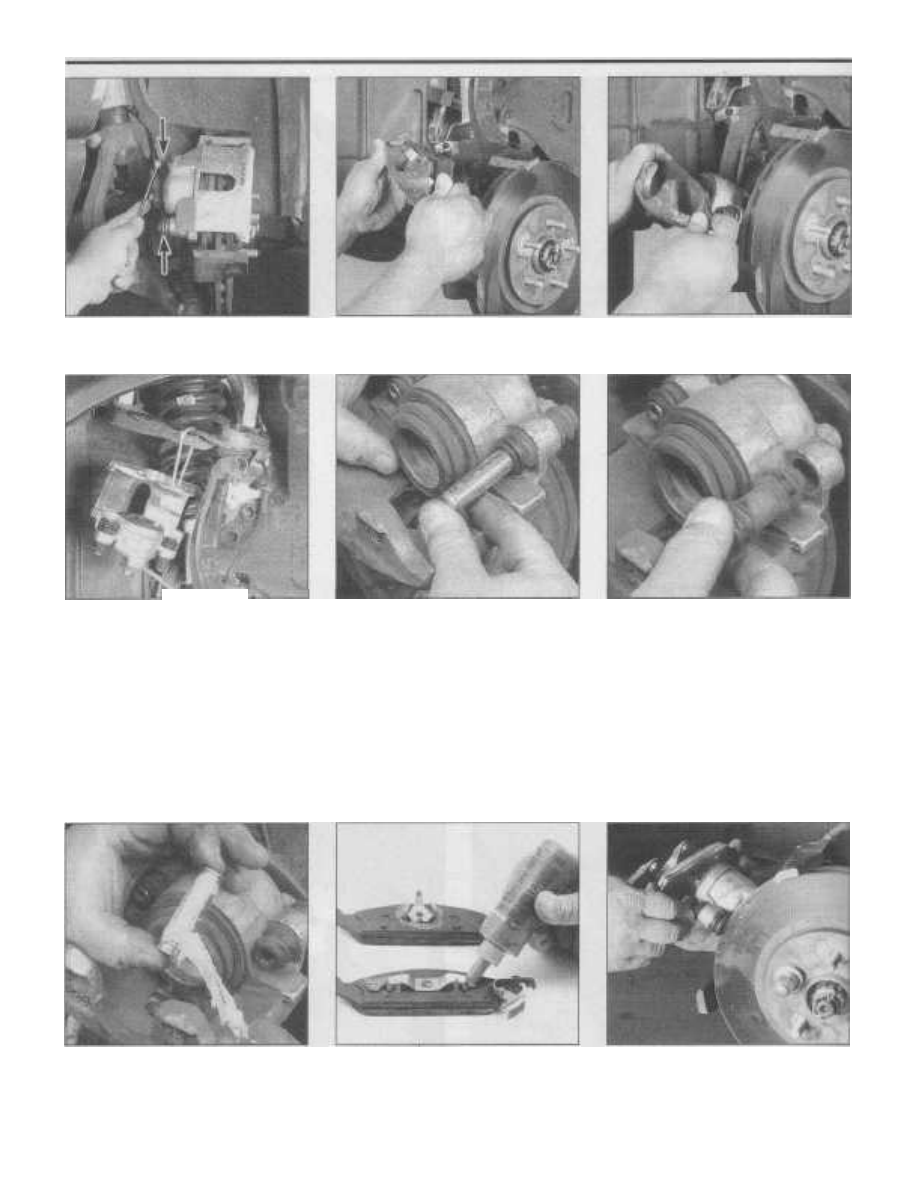Chrysler Cirrus, Dodge Stratus, Plymouth Breeze Haynes. Manual - part 27

9-4
Chapter 9 Brakes
3.4a To remove the front brake caliper,
remove the two guide pin bolts (arrows)
3.4b Lift the caliper off the steering
knuckle and remove the outer
pad from the caliper
3.4c Remove the inner pad
from the caliper
3.4d If you're not going to reinstall the
caliper any time soon, hang it from the
upper control arm with a piece of wire
or equivalent - don't let it hang
by the brake hose
depressed to the bottom of the caliper bore,
the fluid in the master cylinder will rise as the
brake fluid is displaced. Make sure it doesn't
overflow. If necessary, siphon off more of the
fluid. Warning: Never siphon brake fluid by
mouth!
4
To replace the brake pads, follow
the accompanying photos, beginning with
illustration 3.4a. Be sure to stay in order and
read the caption under each illustration.
5
While the pads are removed, inspect the
caliper for brake fluid leaks and ruptures of
the piston dust boot. Replace the caliper if
necessary (see Section 4). Also inspect the
brake disc carefully (see Section 5). If
machining is necessary, follow the informa-
tion in that Section to remove the disc.
Inspect the brake hoses for damage and
replace if necessary (see Section 10).
3.4f Remove the bushing boots, inspect
them for damage and replace if necessary
6
Before installing the caliper guide pin
bolts, clean and check them for corrosion
and damage. If they're significantly corroded
or damaged, replace them. Be sure to tighten
the caliper guide pin bolts to the torque listed
in this Chapter's Specification Section.
7
Repeat the procedure for the opposite
wheel, then install the wheels, lug nuts and
lower the vehicle. Tighten the lug nuts to the
torque listed in the Chapter 1 Specification
Section. Add the appropriate brake fluid to
3.4e Remove the guide pin bushings
3.4g Lubricate the guide pin bushings
with multi-purpose grease before
installing them
3.4h Apply an anti-squeal compound to
the backs of the pads where they mate
with the caliper and piston
3.4i Install the inner brake pad - make
sure the retaining spring is fully
seated into the piston bore